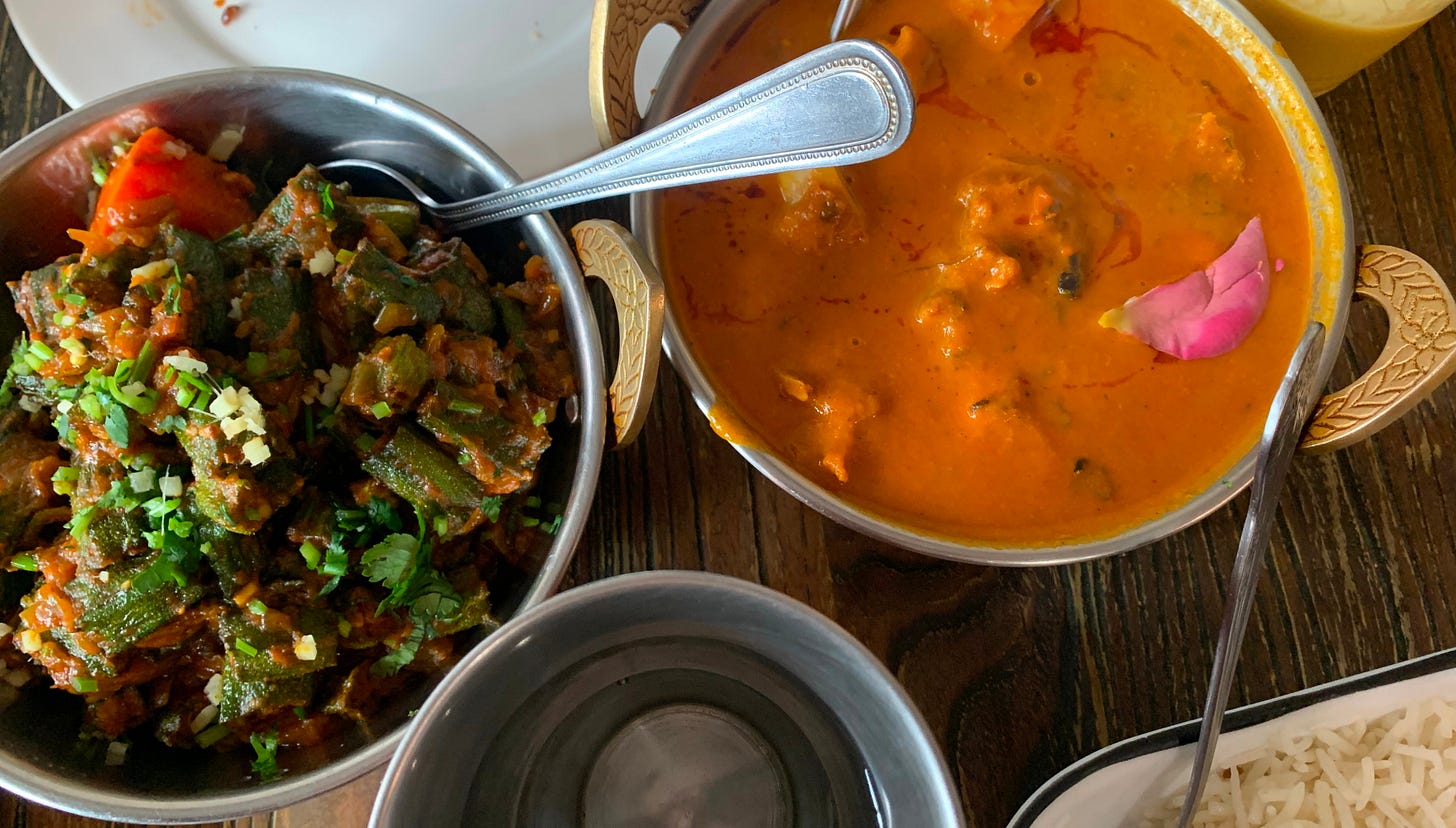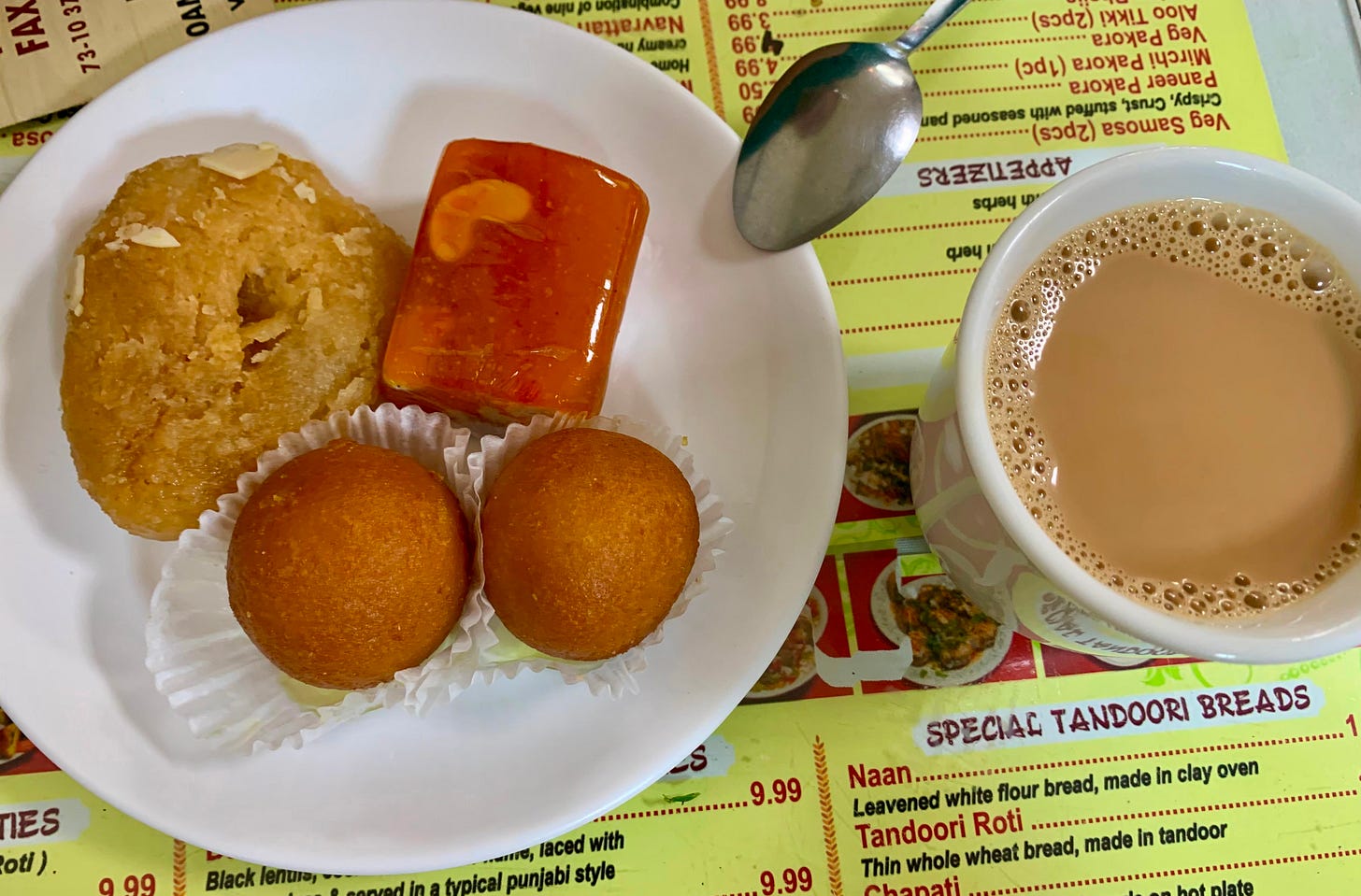In my 30s I have come to realize that my list of favorite cuisines is calibrated, when it comes down to it, around the vegetables. How many are used? How are they treated? Can you reliably find ways to eat them both fresh and cooked, pickled and fried, in supporting and lead roles, whether dressed up or come as they are? Do people await their coming with nervous energy, then eat them all up before their fleeting time on earth is over until next year?
In reality, I’m sure what I’m describing is much more common than not—the heralded arrival of new vegetables is arguably the way of the world as it should be, and I think fewer people have lost hold of that than I sometimes think. But it’s the vegetables that really come to mind when I think about the cuisines I would eat for the rest of my life if forced to narrow my options. When I lived in the Middle East, I quickly and passionately became aware of just how many things can be done with an eggplant, just how many types of vegetables can be hollowed out and stuffed. On my most recent trip to Japan, we walked up to our country inn and found the proprietor hands deep in the dirt, a pile of bamboo shoots at her feet, then ate them, simmered in dashi, a few hours later, along with tempura of maitake and butterbur, and also the best, most mayonnaise-y potato salad I have ever eaten. Once, on a spectacular day in Rome, I ate only vegetables during the daylight hours: wide, flat Romano beans, thickets of cicoria, pickled lampascioni (hyacinth bulbs), and turnip greens, strips of zucchini, and artichoke hearts confited in oil. And that’s not even to mention the early-spring pleasure of a fresh artichoke braised in white wine and herbs, sometimes with a salad of crisp but strangely juicy puntarelle and anchovies alongside it, if you time it right. Even when I think of my first home, Seattle, I see in my mind wild mushrooms and fiddlehead ferns, though I didn’t eat them much—it’s just the feeling of the Pacific Northwest as best I can conjure it.
I am embarrassed to admit that I never quite thought about vegetables as a star of Indian food—one of those national-cuisine categories so diverse the term barely feels useful—I think partly because the meats, breads, cheeses, and pulses are such an over-whelm-your-brain embarassment of riches that I hardly saw the saag for the paneer, if you will. (I’m sure a lot of pulses are technically vegetables somehow, but you know what I mean.) I was happy to be waylaid by the fatty, animal smell of goat or mutton curry, chicken bright red with Kashmiri chilis and smoky-black-burnt from the tandoor, spiced-tomato gravies with small fish or hard-boiled eggs, flaky parathas torn apart with ghee running down my forearms, and the milky cardamom sweetness of gulab jamun (my favorite). I knew, in my rational brain, that India is a huge place with many climates where people grow just about everything, and also a country with hundreds of millions of vegetarians, famously. But I don’t always order with my rational brain at restaurants, and I want to give myself some grace for being distracted by lamb rogan josh. I’m being vulnerable here. Anyway, now I know better.
When chef Amrit Pal Singh opened his restaurant in late 2019, on that stretch between Roosevelt and 37th so dense with gold jewelry stores, sari shops, confectioneries, and restaurants of all kinds, he set his menu apart from his Jackson Heights neighbors with an all-vegetarian approach. His mother was a vegetarian, he told Culinary Backstreets in 2022, and he learned from her how to foreground the “original taste” of vegetables, without clouding or drowning them. Angel Indian Restaurant (named for his daughter) earned quick and effusive praise, perhaps unsurprising considering Singh’s previous job was as head chef at Adda: the celebrated restaurant from Chintan Pandya and Roni Mazumdar that helped reignite (or maybe simply ignite?) the city’s interest in regional and vernacular Indian cuisine, at least among the members of the New York dining public who didn’t already know all about it.
When Covid hit, Angel, like so many of its peers, pivoted to stay afloat as the restaurant industry went into freefall; Singh added non-vegetarian items to appease the delivery audience, and once the dining room had fully reopened, the response from guests led him to stick with the more hybrid menu structure. The meaty half of the menu, like the rest of it, leans North Indian (Singh grew up in Punjab) with bits and bobs from elsewhere. There’s an Amritsar-style fish fry, Goan lamb vindaloo, chicken “PB 35” (the prefix for license plate numbers in Singh’s hometown), and bheja fry, fried goat brains with ginger and chili, a specialty of Hyderabad. Everyone but us seemed to order the much-discussed goat biryani, which arrived under a puffed-up caul of steaming bread dusted with chili powder. It looked good. But the dish I’m still thinking about is the okra.

The bhindi masala at Angel was one of my favorite dishes I’ve had this year, and I know this because I can still feel, somehow, with my teeth, the particular snap-pop-chew-pull of okra handled by a cook who knows it inside and out. I always liked okra, because I’m a texture girl, and when well prepared it offers a whole continuum of them, all layered one after another like a soil core sample. I love the cat’s-tongue surface of the pod with all its funny corners, and the way it feels leathery but snappy as you bite it. And how nature can make something so sweet and round as an okra seed, spherified grass, caviar pop. The lubricant, thirst-quenching slime that reminds you you’re eating a fruit, when it comes down to it. In Angel’s bhindi masala I could taste the tomato and onion, and the visibly fresh minced ginger, and the warm hum of the masala, but it was all in service of the okra, as though the other ingredients had been summoned to worship it.
Though the restaurant’s point of view is different now than when it opened, I’d venture it’s not all that different: Angel’s menu is divided into “veg” and “non-veg,” and more than half the dishes fall into the former camp. I focused my efforts here and was rewarded with vegetable pakodas with crispy frills of slivered onion and what felt to my teeth like carrots and summer squash in their tender caking of gram-flour batter. The onions make a crunchy halo like the skirt of cheddar cultivated on the edges of a grilled cheese, pinpricking your tongue. Photogenic paneer kulcha arrived on a metal lunch tray, the tray’s smaller pockets filled with chana masala, creamy dahi (cheesy yogurt curd), and little pickles I don’t know the word for. The paneer inside the kulcha is both crumbly and melty, perfectly salty, a little tart; the bread is oily and bubble-burnt in all the right places.
There is a bittersweet thing about this newsletter, the process of looking back in my notes, camera roll, and memory, pulling up a PDF of the menu to unshake any details that got stuck in the days or weeks since I looked at the physical copy. In thinking back on all the dishes I ordered, I’m also, necessarily, thinking about the ones I didn’t. Right now, I am thinking wistfully about the lotus-root kofta that got away, softly starchy, fried crispy but buttery inside. The coconutty Kerala-style vegetable moilee, and the alluringly golden-green fritters of curly kale, and the minced-mashed baingan bharta, typically my smoky eggplant litmus test. I can’t help but feel like I ordered a little wrong: The butter chicken we threw in “just in case” was destined to be forgotten, despite the richness of its Golden Gate orange color and the nice garnish of scattered rose petals. But you sometimes have to order wrong to know, next time, how to order right.

note: 100% halal menu
would order again: vegetable pakoda, bhindi masala, paneer kulcha, and a Kingfisher





